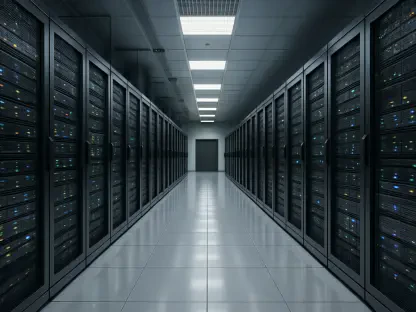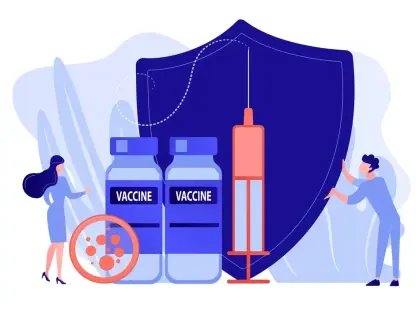In recent years, forensic crime laboratories across the United States have found themselves in a critical bind, grappling with numerous challenges that threaten their operational capacity and effectiveness. As technological advancements propel the forensic science field forward, these labs face unprecedented pressure to handle evidence with efficiency and precision. Concurrently, underfunding and legislative mandates exacerbate the strain on already burdened systems. This complex interplay of factors highlights the urgent need for strategic solutions to sustain the essential functions of crime labs in the justice system.
The Problem of Evidence Backlogs
Navigating Massive Caseloads
The overwhelming backlog of evidence processing has become a defining issue for state and local crime labs. These facilities confront a constant influx of varied evidence types that need meticulous examination, including rape kits, drug samples, and blood vials. The confluence of an overwhelming volume and complex procedural demands causes significant delays that jeopardize the timeliness and integrity of prosecutions. As court calendars become increasingly distorted, law enforcement agencies face tough decisions on prioritizing evidence testing. This dilemma not only postpones justice but can also lead to the unfortunate dismissal of cases due to protracted processing times.
Balancing Demand and Capacity
Despite advancements in forensic technologies, such as DNA profiling and digital evidence analysis, the gap between demand and capacity continues to widen. State and local crime labs are under intense pressure to process more evidence with limited resources, often leading to bottlenecks and inefficiencies. The surge in demand resulting from new legislative requirements and public expectations calls for a reassessment of the current forensic framework. While these technological shifts offer promising solutions for complex investigations, they also necessitate commensurate investment in personnel, training, and infrastructure to avoid overburdening facilities.
Legislative Impacts on Operations
New Testing Mandates
The introduction of new state laws and regulations further compounds the operational challenges faced by forensic labs. Many of these legislative initiatives impose mandatory testing requirements without corresponding budget increases, causing additional strain on already overstretched resources. Such scenarios are particularly evident in states enacting stricter DUI laws and intensified marijuana enforcement, where toxicology and drug analyses are in high demand. While the intent behind these regulations is valid, they unwittingly contribute to existing bottlenecks, emphasizing the need for integrative policy approaches that align funding with expanded responsibilities.
Potential Federal Funding Cuts
Current political dynamics, including Republican majorities in Congress favoring reduced federal spending, threaten to decrease vital funding for forensic science improvement initiatives. Potential cuts to critical federal grant programs, namely The Paul Coverdell Forensic Science Improvement Grants Program and the Debbie Smith DNA Backlog Grant Program, have raised alarms among forensic experts. These programs are essential for upgrading laboratory infrastructure, training personnel, and managing evidence backlogs. The prospect of budget reductions could stymie ongoing efforts to achieve timely and accurate case resolutions while further compromising lab capabilities amid growing investigatory demands.
Systemic Workforce Challenges
Retaining Skilled Analysts
One of the persistent dilemmas striking forensic laboratories pertains to workforce retention. The disparity between public sector salaries and those offered in private industry poses a significant challenge in retaining skilled personnel. Lengthy training periods for new analysts only compound this issue, as crime labs struggle to maintain a robust staff capable of handling intricate forensic inquiries. Moreover, the intense work pressure and the risk of analyst burnout can detrimentally affect the quality of forensic analysis, leading to potential errors, malpractice, and ethical breaches that could jeopardize numerous case outcomes.
Overcoming Analyst Burnout
The repetitive nature of forensic analysis, coupled with backlogs and resource constraints, has led to increasing concerns about analyst burnout. This phenomenon not only threatens work quality but also causes significant emotional and mental strain on professionals, compromising ethical standards with practices such as “dry labbing” or fabricating results. Addressing these personnel challenges requires balanced solutions focusing on organizational capacity, ensuring that staff are neither overworked nor placed in untenable situations. Implementing support mechanisms along with workload management strategies can mitigate adverse outcomes and reinforce a culture of integrity and professionalism within forensic labs.
State Responses to Backlogs
Diverse Strategies for Mitigation
Various states have adopted unique strategies to address evidence processing backlogs and their associated challenges. Colorado illustrates one such example, grappling with both significant delays and a scandal stemming from chronic understaffing. The state’s legislative and institutional responses include boosting oversight mechanisms and intensifying financial investments in forensic capabilities. Similarly, Rhode Island’s initiatives reflect efforts to revamp oversight structures within their crime labs, aiming to alleviate systemic inefficiencies. These regional tactics denote the commitment to reform while highlighting the necessity for tailored strategies aligned with specific localized challenges.
Prioritization of Caseloads
In light of resource limitations, certain states have opted for strategic prioritization of caseloads—often at the expense of certain evidence types. Oregon’s decision to suspend DNA analysis on property crime evidence to focus on more critical areas like sexual assault kits underscores the difficult choices made due to existing constraints. This policy represents a temporary yet notable shift in resource allocation, demonstrating the state’s responsiveness in addressing urgent needs despite overall limitations. Similarly, Tennessee has chosen to deprioritize nonviolent case analyses, though this strategy risks missing early opportunities for identifying potential repeat offenders.
Models of Reform and Improvement
Exemplary Operational Enhancements
Despite prominent challenges, several jurisdictions exemplify successful reform and improvement measures within forensic laboratories. Connecticut stands out as a model for overcoming previous issues such as accreditation lapses and significant case backlogs. Through focused strategies on enhancing operational frameworks and fostering workforce capabilities, Connecticut has achieved substantial reductions in average case processing times. This accomplishment attests to the potential gains achievable via committed organizational planning, robust resource allocation, and comprehensive staff development initiatives, setting crucial precedents for nationwide improvement efforts.
Welcoming Systemic Support
Forensic crime laboratories throughout the United States have encountered daunting challenges that threaten their ability to operate effectively. As technology in the forensic science arena continues to advance rapidly, these labs face significant pressure to process evidence accurately and efficiently. This technological progression, while beneficial, introduces complex demands that can overwhelm existing systems. Simultaneously, labs are further strained by chronic underfunding, which limits their resources, and legislative mandates that impose additional burdens without adequate support.
This combination of factors creates a precarious situation for crime labs, which are pivotal in the justice system. They conduct vital analyses that can make or break criminal cases, meaning delays or inaccuracies could have serious consequences. This situation reveals an urgent need for strategic interventions—whether by increasing funding, implementing more efficient technologies, or revising legislative requirements—that can support and sustain the crucial functions of these labs. Only through such measures can crime labs continue to deliver the precise, reliable service that the justice system demands. Balancing these challenges is crucial to protect the integrity of legal processes and uphold justice.









